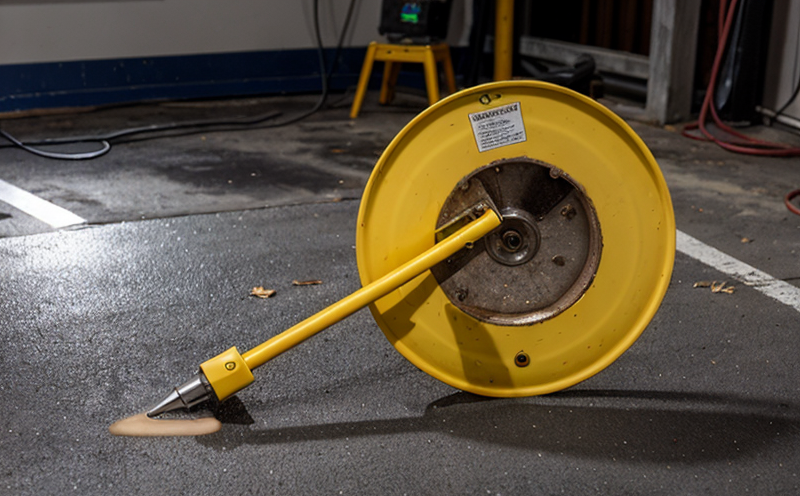ISO 17640 Ultrasonic Testing of Welded Joints
The ISO 17640 standard provides a framework for ultrasonic testing (UT) to evaluate the structural integrity and quality of welded joints in various industries. This service is essential for ensuring compliance with international standards and regulatory requirements, particularly when dealing with critical components that must withstand high stress or temperature variations.
Our laboratory specializes in providing ISO 17640 compliant ultrasonic testing services tailored to meet the needs of industries such as aerospace, automotive, construction, and manufacturing. By leveraging advanced UT technology, our team ensures accurate assessment of welded joints for defects like porosity, slag inclusion, incomplete fusion, and cracks.
The process begins with careful preparation of the test specimens according to strict guidelines outlined in ISO 17640. Specimens are cleaned thoroughly using appropriate methods depending on their material composition and surface condition. Proper cleaning ensures accurate defect detection without interference from contaminants or rough surfaces.
During testing, ultrasonic waves propagate through the specimen, reflecting off internal flaws back towards the transducer where they are detected and analyzed by our experienced technicians. We use state-of-the-art equipment capable of generating precise frequencies tailored to specific materials and joint geometries.
The results from these tests provide critical insights into the quality of welded joints, helping manufacturers make informed decisions about product design and manufacturing processes. For instance, in aerospace applications, knowing exactly where cracks or other defects lie allows engineers to take corrective measures before assembly or deployment.
Our commitment to accuracy extends beyond just performing tests; it includes thorough documentation and reporting based on the findings of each examination. This information serves as valuable feedback for continuous improvement within production lines and helps maintain high standards across all projects.
To summarize, ISO 17640 ultrasonic testing is an indispensable tool in ensuring quality control during manufacturing processes involving welded joints. It plays a crucial role in maintaining safety standards while also supporting compliance with relevant international regulations.
Scope and Methodology
| Scope | Description |
|---|---|
| Welded Joints Inspection | Involves evaluation of fusion zones, heat-affected zones, root faces, and any other areas specified by the client. |
| Defect Detection | Focuses on identifying defects such as porosity, slag inclusion, incomplete penetration, and cracks within the weld. |
| Material Types | Includes carbon steel, stainless steel, aluminum alloys, titanium alloys, and other metals specified by customers. |
The methodology employed adheres closely to ISO 17640:2015 which specifies ultrasonic testing procedures for the inspection of welded joints. This includes selecting appropriate frequencies based on material thickness and type, choosing suitable coupling agents, setting up proper scanning patterns, and interpreting results according to established criteria.
Our technicians possess extensive experience in operating advanced ultrasonic equipment like Phased Array Ultrasonics (PAUT), Liquid Coupled Ultrasonics (LCU), and conventional contact probes. These tools enable detailed examination of even small defects within complex geometries.
Quality and Reliability Assurance
- Strict adherence to ISO 17640:2015 standards throughout the entire testing process.
- Use of certified ultrasonic equipment calibrated regularly by independent laboratories.
- Ongoing training for our staff on latest techniques and best practices in ultrasonic testing.
- Comprehensive documentation and reporting to ensure transparency and traceability of all results.
We take pride in maintaining the highest levels of quality assurance through rigorous internal audits conducted at regular intervals. These reviews focus not only on technical accuracy but also operational efficiency, ensuring that every aspect of our service meets or exceeds client expectations.
In addition to these measures, we actively participate in industry forums and conferences related to non-destructive testing (NDT) methods. This allows us to stay ahead of emerging trends and innovations in the field, further enhancing our capabilities as a leading provider of ISO 17640 compliant ultrasonic testing services.
Customer Impact and Satisfaction
The impact of ISO 17640 ultrasonic testing extends far beyond mere compliance—it directly contributes to enhancing the reliability and longevity of products manufactured using welded joints. By identifying potential weaknesses early on, our service helps prevent costly repairs or failures later in the product lifecycle.
For quality managers and compliance officers, this translates into reduced risks associated with non-compliance penalties and improved reputation among stakeholders. R&D engineers benefit from gaining deeper insights into material behavior under different conditions which can lead to innovations in design and process optimization.
Our focus on reliability also means that procurement teams receive more accurate data when selecting suppliers ensuring better value for money spent. Overall, our ISO 17640 ultrasonic testing service fosters trust between clients and partners by delivering consistent, high-quality results across multiple projects.





